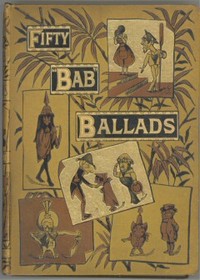Ballad: The Rival Curates
byThe Rival Curates tale opens not with confrontation, but with a playful tension that threads through an age-old rivalry. In many small towns, such characters as these—Hopley and Hooper—embody more than just clergy; they reflect the conflicting pulls of pride and peace within any community. Where most expect a duel of egos, the story offers something richer: an invitation to examine the power of joy, music, and shared humanity over empty disputes.
The plan was simple but mischievous. Hooper’s allies were dispatched not with swords or sermons, but with strict instructions: bait the man, provoke him into a reaction. The strategy hinged on insult; wait until he was called something intolerable—“snob,” or worse—and then, and only then, retaliate with calculated righteousness. But the scene they walked into upended all their expectations. Hopley, far from boiling with indignation, stood calmly among nature’s quiet applause. A flute in hand, doves circling in air, and peace flowing from his very posture—there was no enemy to be found.
Witnessing this, Hooper’s men were not merely surprised; they were deeply moved. Their mission of offense dissolved before the music and serenity in Hopley’s small field of joy. The air, filled with birdsong and flute notes, felt like a prayer—unspoken, yet clearly understood. It wasn’t the confrontation they were promised, but a surrender they gave willingly. No banners were raised, no chants of loyalty shouted—only the hush of a shared admiration, impossible to resist. In that moment, peace was not negotiated; it was absorbed.
They returned not as soldiers of contention, but as witnesses to something transformative. Hooper, ever the skeptic, met them with raised brows and lowered staff. But when he heard their account—gentle sounds, radiant smiles, and a serenity that words barely captured—his heart softened like spring soil. The town that had divided over clerical charisma now looked on two men, once rivals, embracing a message greater than either of them alone. The flute, now symbolic, seemed to play across every home, whispering, “Peace has a tune, and we’ve heard it.”
The mutual decision that followed was neither dramatic nor forced. Both men recognized that their competition had grown tired and meaningless. No parishioner ever benefitted from a feud; the people merely watched and waited for wisdom that never came. Hopley and Hooper understood that leadership through harmony carried more weight than sermons laced with rivalry. So they shed their defenses and stood not as opposing curates, but as co-shepherds of a reconciled flock. The town, once marked by division, found new identity in this unity.
What makes this ending profound isn’t just that they laid down arms, but how they did it. There were no grand speeches, no martyrdom, no grand betrayals—only a decision to see each other clearly. Hopley’s flute became a vessel for peace; Hooper’s listening became his strength. Their story reminds us that leadership doesn’t always come with power, but often with the bravery to yield. Pride may win applause, but peace earns lasting reverence. In the quiet moments, when rivalries fall away, real transformation begins.
From that day forward, their ministries intertwined. They taught together, prayed together, even laughed together—two voices in a chorus that now echoed across Spiffton and beyond. Their congregations, once poised to defend their respective champions, saw more value in unity than in picking sides. The names “Spiffton-extra-Sooper” and “Assesmilk-cum-Worter” began to sound less like factions, more like old chapters in a story that had finally found its gentle ending. What they spread now wasn’t doctrine, but delight. They traveled not to convert, but to connect.
Even the local children, who once mimicked their elders’ loyalties, now ran freely between parishes. They spoke of Hopley’s birds and Hooper’s staff not as symbols of sides, but as parts of the same shared legend. Holidays were no longer split in observance; now they gathered under one sky, one choir, one faith in kindness. Where sermons had once competed in volume, a simple tune from a wooden flute was all that was needed. The people no longer sought to choose a favorite; they chose the peace that both offered.
The tale of The Rival Curates teaches something more lasting than satire or humor. It offers a fable where reconciliation is not the end of a story but its true beginning. While many may enter debates with fury and cleverness, few exit them with wisdom and grace. This tale shows that dignity lies not in dominance, but in understanding. To lead is not to outshine, but to uplift. And sometimes, all it takes is a flute, a dove, and the courage to stop fighting.

